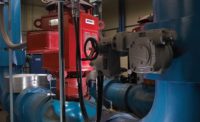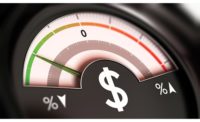Facility owners desire for sustainable buildings marches forward in 2017 and commercial pump manufacturers are ready to provide intelligent, energy-saving units and technologies.
“It’s a macro trend,” says Brent Ross, global director of configured building equipment with Armstrong Fluid Technology. “We see the marketplace appreciative of sustainability. It’s certainly becoming more real as we go along. The U.S. marketplace is a little behind the world, but it’s moving along.”
Ross says Armstrong feels that eventually the old units are going to have to come out and there won’t be the standard replacement. Eventually, the baseline for pump selection, he adds, will be a unit that provides a lot of options for saving energy.
“The industry understands that in the future all pumps are going to be intelligent,” he says. “Customers are not going to be able to buy non-intelligent pumps.”
Kyle DelPiano, market development manager with Xylem, believes this market trend is happening because of the new regulations from Washington. The Energy Conservation Standard for Pumps applies to clean-water pumps between 1 and 200 HP, requiring at least 25% of pumps in the market today to improve efficiency and reduce energy losses.
“It all ties together because of the new regulations from the Department of Energy,” he notes. “These owners are becoming more involved because of this.”
DelPiano says engineers will have to evolve with the way they spec pumps for commercial applications. He says in the past they would just select the pump at its best efficiency point and move on to other elements.
“Moving forward in 2017, 2018 and into 2020 when the new DOE regulations come into place, designers will have to really scrutinize pump selection,” he says.
Xylem has developed a method called Part Load Efficiency Value, a load profile equation that engineers can apply to their pumps during selection. PLEV already has been recognized by ASHRAE, DelPiano points out.
“It is something that shows where the building would operate at across the U.S.,” DelPiano notes. “PLEV has been used in the chiller world since 1998.”
Another accelerating market trend is how much carbon is being released into the atmosphere, Ross notes.
“It’s not just about energy savings any longer,” he says.
New toys to work with
At the AHR Expo, Armstrong Fluid Technology debuted some new pumps for the market. The first is the Armstrong Design Envelope VIL Retrofit pump that allows building owners to replace the moving parts of a constant-speed pump and convert it into a variable-speed pump. Making the change will save up to 70% of energy costs, Armstrong states.
The other new unit is the Armstrong Design Envelope Horizontal pump with sensorless integrated controls. Armstrong says this unit will lower pumping costs by 20% or more. Controls have become a major element in pump selection and design, Ross says.
“Things are becoming more complex,” he states. “You can’t be a mechanical engineer nowadays without an appreciation for controls.”
Ross believes in the future central cooling and heating plants will be a market that pump manufacturers can better serve.
“We see that because of the drive for the lowest energy consumption,” he notes.
This article was originally titled “Get smart” in the February 2017 print edition of PM Engineer.






